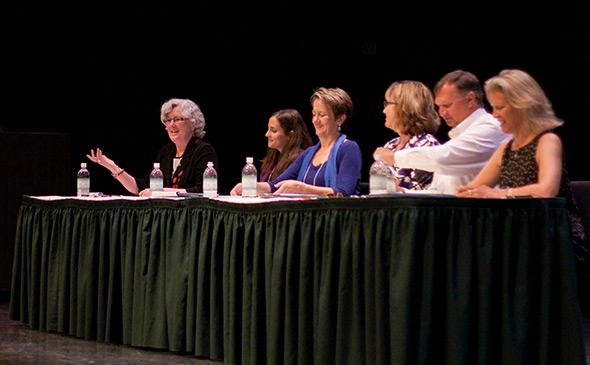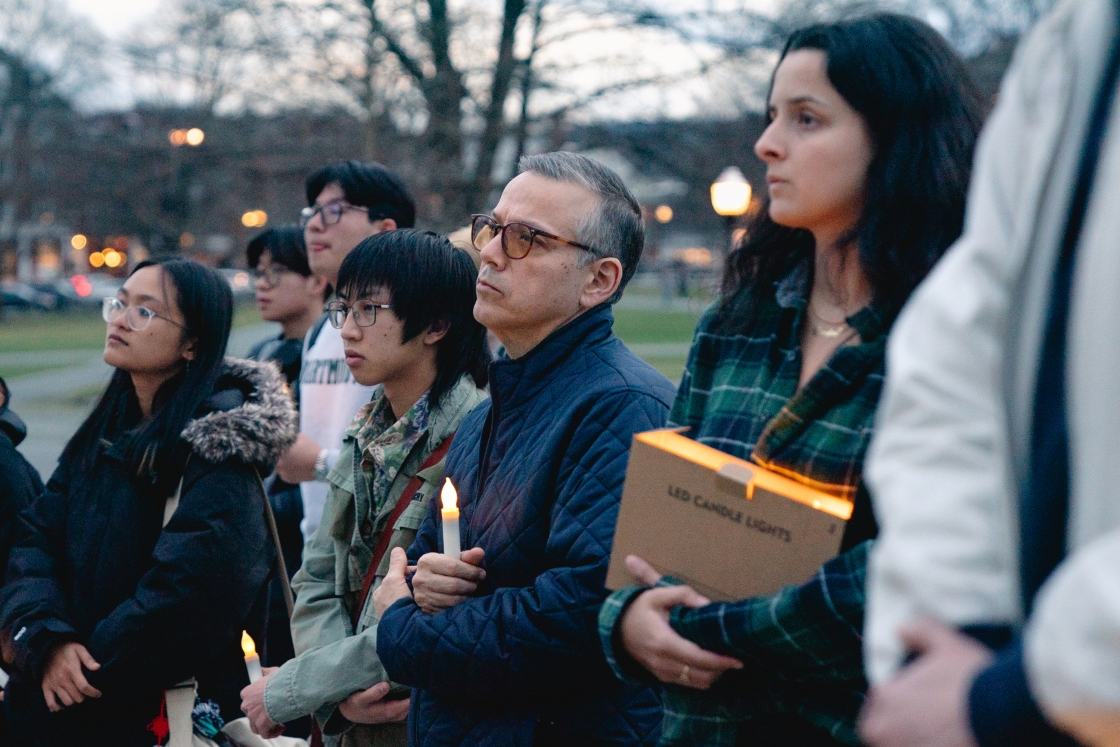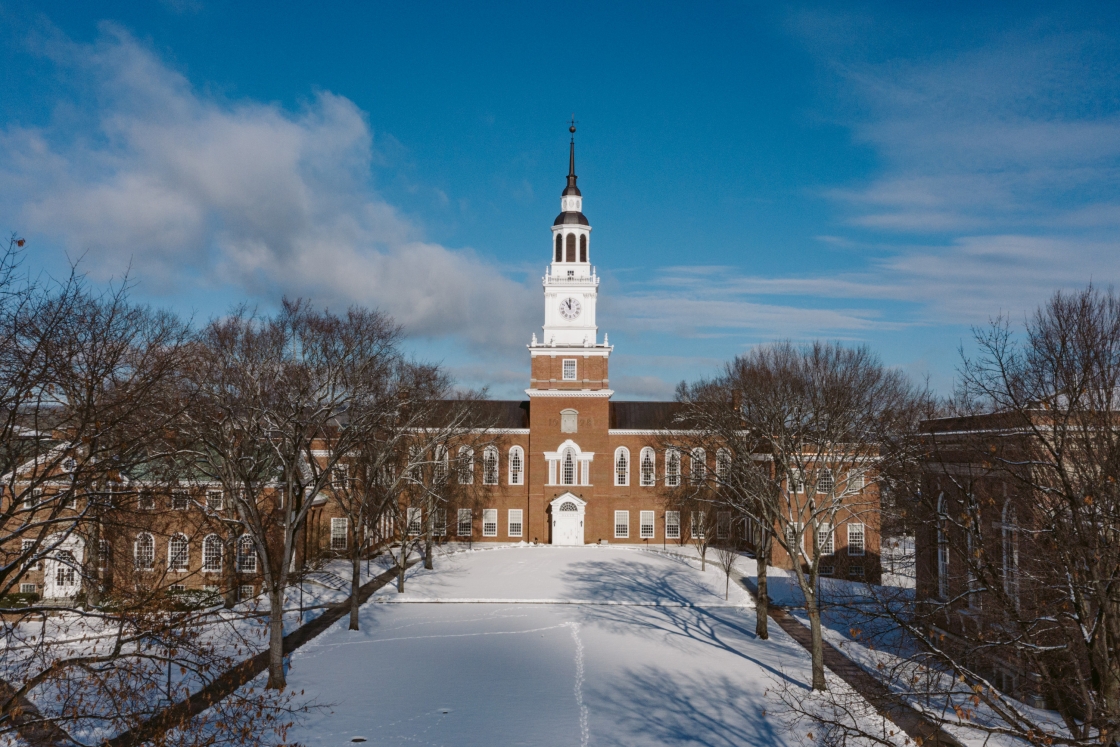Claudia J. Bayliff is an attorney and educator with more than 26 years of experience working on issues related to sexual assault. She currently serves as Legal Momentum’s project attorney, developing judicial educational materials about sexual assault and helping to implement a nationwide, comprehensive plan for judicial education about sexual assault. She was the first chief of the U.S. Air Force’s worldwide Sexual Assault Prevention and Response Program and, with clinical psychologist David Lisak, she was an organizer of the Dartmouth Summit on Sexual Assault, held at the College the week of July 14. She spoke with Dartmouth Now about her work and the importance of the summit.

What are the challenges in the effort to persuade the leaders in higher education to collectively address the problem of sexual assault on campuses?
One of biggest challenges is for leaders to understand both the real magnitude of the problem and the actual dynamics of sexual violence. Sexual assault is vastly underreported, so there is a tendency to minimize the extent of the problem. Leaders also struggle with accepting the fact that some of their students, faculty, or staff are rapists. As a result, sexual violence is often viewed as a “miscommunication” or blamed on alcohol use. This is true of institutions across the country, not just college campuses. Another challenge is for leaders to recognize that there is no easy solution to the problem. Preventing sexual violence and responding effectively when victims come forward, require leadership from the top and a broad institutional commitment of time and resources, as well as a carefully thought out strategy and long term culture change. This problem cannot be solved by having students attend a short presentation during orientation.
As chief of the U.S. Air Force’s effort to confront the problem of sexual assault, what did you learn that informs your work with colleges and universities?
I was the first chief of the Air Force’s brand new, worldwide Sexual Assault Prevention and Response Program. The most important lesson I learned is that strong leadership, starting at the very top and including every level, is critical. If leaders do not make a strong, visible, long-term commitment to stopping sexual violence, and provide the necessary resources to back up their commitment, programs will fail. Leaders and policy makers also need to understand the dynamics of sexual violence. As one Air Force officer explained, “We can’t fix the problem if we don’t understand what it is.” There is no quick fix. Preventing sexual violence is a long-term problem that requires sustained effort over time.
Institutions need a carefully planned strategy, based on research on what works and what does not work. Efforts must be tailored to the audience; you cannot give the same prevention message to senior generals that you give to junior enlisted personnel. I also noticed a tendency in both the military and on campuses to view sexual violence as a problem that just involves young people. That was another challenge: getting people at every level to understand that everyone has a role in preventing and responding to sexual violence. Another lesson learned is that we need good, institution-specific data about victims and perpetrators. Since sexual violence is the most underreported crime, we cannot rely on official reports to inform our prevention and response efforts. Instead, we need regular, carefully constructed climate surveys to understand the nature of the problem and measure the effectiveness of our prevention efforts. Institutions need to realize that victims will not come forward unless they trust that the institution will take them seriously, thoroughly investigate their complaints, and hold perpetrators accountable.
What is the most important change colleges can make to address this problem?
Campus leaders face many of the same challenges that military leaders do. Campus officials must make a strong, visible, long-term commitment to stopping sexual violence at their institutions and they must provide the necessary resources and support to back up their commitment. Too often we rely on small, underfunded organizations on campuses for all of our sexual assault prevention and response efforts. We have learned a tremendous amount about what works and what doesn’t work since I started doing this work 26 years ago.
Read more:We now know that preventing, and effectively responding to, sexual violence requires a carefully thought out, long-term strategy, with messages tailored to the developmental level of the intended audience. The same message will not work for senior campus officials and first year students. Campuses need to gear their prevention efforts toward those who can actually prevent sexual violence: perpetrators, facilitators and bystanders. Too many “prevention” programs are addressed to potential victims, as though they could prevent sexual assault. We also need to recognize that holding perpetrators accountable is a critical part of any prevention efforts.
Campuses need to collect institution-specific data on an ongoing basis. That data must include information about perpetrators, as well as victims. Otherwise, campuses have no way to measure the success of their prevention efforts. The good news for campuses is that they have the top experts in the country right at their institutions. Most of the best research we have on sexual violence comes from university researchers. Finally, we need to recognize that it will be expensive to do this right. It is incumbent on all of us—federal and state governments, alumni associations, professional organizations, and policy makers—to ensure that institutions of higher learning, particularly small, under-resourced campuses, have the resources they need to do this right.
Some critics of the adjudication model involving an independent investigator and administrative sanctions argue that it violates the legal rights of the accused. How would you answer that criticism?
Institutions of higher learning must provide a disciplinary process that is fair to everyone involved, including those accused of violating campus rules. As an attorney, one of the biggest problems I see is the tendency to confuse the role of the campus disciplinary system with that of the criminal justice system.
The question a campus disciplinary system must answer is: “Does this individual deserve the privilege of being a part of this community?” To answer that question, the panel or board must decide whether it is more likely than not that the individual accused of violating a campus policy is “responsible for” committing that violation. If so, the campus then decides the appropriate sanction for that violation. The campus disciplinary system is entirely different from the criminal justice system, where the sanction for committing a crime is much more serious and can include imprisonment and a criminal record.
I think the best way to understand the difference is to think about the following analogy: If an employee viciously assaults a co-worker at work, the assailant may be charged with a crime and face criminal prosecution. Whether the police are involved or not, the employer has an independent responsibility to provide a safe working environment for all of his or her employees. As a result, employers must use the sanctions at their disposal, including firing the employee and banning the employee from the workplace, to protect the safety of the other employees. Campuses have similar obligations to provide environments free from discrimination by using the disciplinary process and sanctions they have at their disposal.
I am not in any way minimizing how difficult it is for campus disciplinary boards to investigate a report of sexual violence. Trained, skilled, experienced investigators must do these investigations carefully and thoroughly.
One of the biggest challenges for campus disciplinary boards is figuring out the best way for them to gather the information they need to make informed decisions. As we struggle to answer that question, we need to be careful not to confuse the campus board’s role with that of the criminal justice system.
What was the significance of the Dartmouth Summit and what do you hope will come out of it?
As I have traveled around the country presenting on sexual assault, I noticed campuses struggling with the same issues. My colleague David Lisak and I started working on a plan to address the issue of campus sexual violence in a multidisciplinary, comprehensive way quite a while ago. We were thrilled when Dartmouth agreed to host the first summit. The goal of the summit was to bring together a multidisciplinary group of stakeholders, including federal policy makers, to discuss the issues campuses are facing. Unlike other conferences, the summit was designed to create a mechanism for the participants to address these difficult issues on an ongoing basis.
We identified five key issues that campuses are struggling with and created a working group for each issue. Summit participants who volunteered for the working groups agreed to continue to work together to make recommendations and propose solutions to some of the most vexing problems campuses are facing.
We want to sustain the efforts made and enthusiasm generated at the Dartmouth Summit. I hope that we can make this summit an annual event. To do that, we need other campuses to come forward and volunteer to host the summit in the years to come. We also need funding to provide scholarships for those who cannot afford to attend future conferences, to ensure that all stakeholders can participate. The working groups are all volunteers. We need stable funding and technical support to keep the working groups going. We are also hoping to bring the working groups together again in six months, so they can continue to collaborate. The long-term goal is to create a multidisciplinary cohort of experts and practitioners who can make recommendations, identify best practices and provide resources to institutions across the country.

